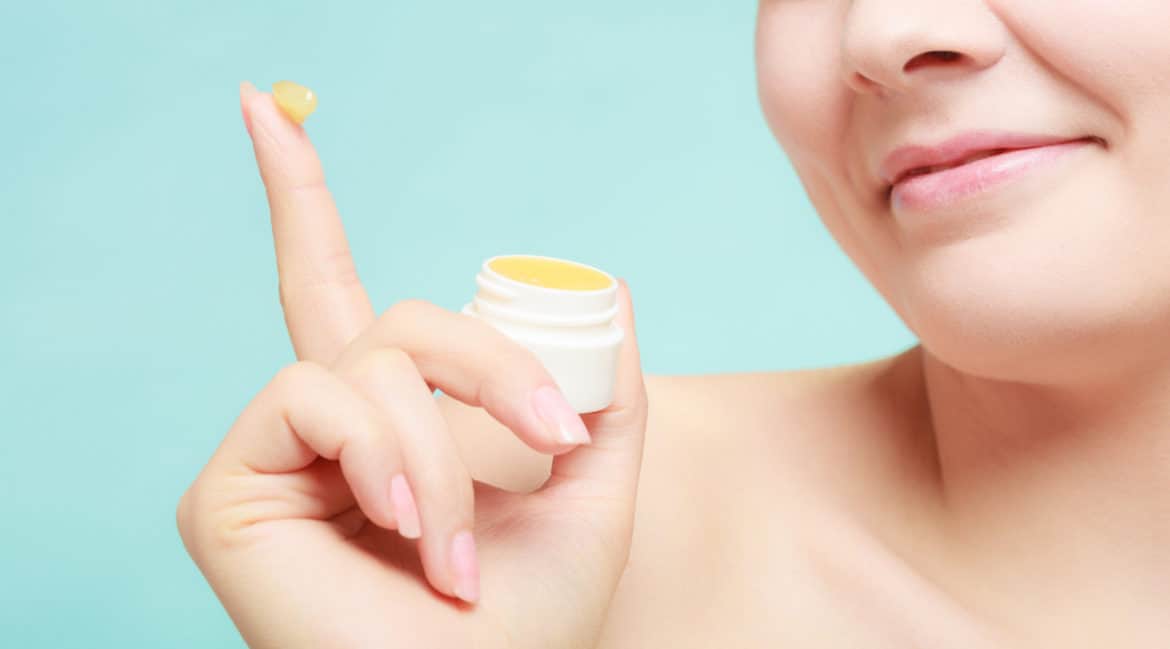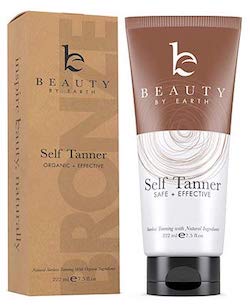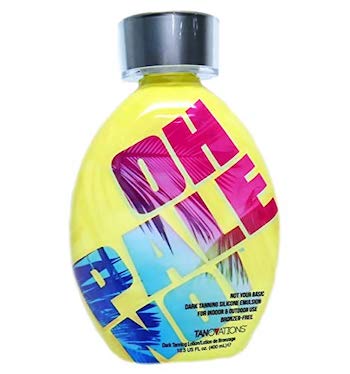There is a myth in the tanning world, claiming that Vaseline will help you tan faster, helping to make the most of a short period of time in the sun.
Lathered all over the body, the Vaseline supposedly intensifies the UV rays which reach the skin and cause them to tan your skin with a higher, faster intensity.
With so many great tanning oils and lotions on the market, should you use Vaseline to tan?
The answer is simple – no. Vaseline is made from a mixture of hydrocarbons, developed from petroleum. It is essentially a grease. It is used to hydrate the skin and sometimes act as a barrier cream as well. However, you should stay away from tanning with Vaseline if you want to protect your skin from damage done by the sun.
Why Tanning With Vaseline Is A Bad Idea
Vaseline and other petroleum jellies are a mixture of mineral oils and various waxes which combine to form a jelly-like substance. The petroleum in the jelly helps it form a water-protective barrier over the skin and helps to seal in moisture.
This petroleum-based substance is good for hydrating the skin but can cause damage to the skin if used when tanning. Vaseline on the skin will attract UV rays, intensifying them as they reach the skin. While this may seem like the ideal solution to quick tanning, it really is quite dangerous.
Tanning in the sun always comes with its dangers, from sunburn to increased risk of skin cancer, and using Vaseline will only quicken any damage done to the skin.
When in contact with the sun, skin cells produce more melanin, which gives the skin a tanned tone. These skin cells can only tan so much, and when in contact with intensified UV rays, elastin (fibers in the skin) start to break down, which over time causes the skin to sag and stretch, causing premature aging of the skin.
This can also lead to leathery skin, wrinkles and liver spots. In severe cases, extended exposure to sunlight can lead to skin cancer. Using Vaseline only makes the UV rays stronger and more intensified on the skin, quickening the damage done.
Using Vaseline when tanning will also more likely leave you with severe sunburn, rather than a golden tan. When the UV rays cause the skin to dry out and burn, the body’s immune system reacts and sends a rush of blood to the affected area. This is why sunburn appears red, hot and irritated.
Another downside to using Vaseline in the sun is that it will almost definitely cause breakouts and irritation. Being a thick substance, Vaseline will soak down and clog pores.
Tie this in with sweating and excess oil in the sun, and you are sure to experience a breakout. This is especially dangerous for those who have sensitive or acne-prone skin and is best to just avoid it altogether.
Vaseline has many great uses, but using it for tanning is just not a good idea.
How Vaseline Helps With Tanning
All hope is not lost, there are still a few ways that Vaseline can help with tanning, which do not involve it burning your skin in the sun.
If you are looking to self-tan at home, Vaseline can be really useful. Applied to the nails, the hairline and other out-of-bounds areas, Vaseline can stop the self-tanner from staining certain areas. Nails are notorious for becoming stained by self-tanners, and Vaseline is the perfect barrier cream to stop this from happening.
There are some tanning-specific barrier creams on the market, but Vaseline gets the job done just as well, if not better, and comes at a fraction of the price.
Many tanning salons will also use Vaseline to protect certain areas of the skin and body during a spray tan. If the professionals are using it, so should you!
How To Soothe Skin After Sunburn
If you do happen to tan with Vaseline and find that your skin is sunburned, irritated and sore afterward, you might be looking for ways to soothe the burn.
Protect yourself – If you are still in the sun and you feel your skin starting to burn, cover up with a high SPF sunscreen and stay in the shade until your skin has healed.
Clothing – If you are sunburned, try and wear loose cotton clothing. This allows your skin to breath, not restricting the sunburned areas.
Pain relief – Sunburn is uncomfortable, and if it is quite painful, you can take over the counter anti-inflammatories and pain killers to help relieve the pain.
Cool compress – Use a dampened towel, soaked in cool water, to compress sunburned areas. Alternatively, you can take a shower or bath with water just below lukewarm temperature.
Drying your skin – After a shower, you should not rub your skin dry. Instead, dry your skin by gently patting it. Use an unperfumed cream or lotion to lock in moisture. You will have to apply moisturizing products to your skin often to revitalize the hydration lost in the sunburn.
Aloe Vera – Aloe Vera is a great choice for sunburned skin. Not only does it have a cooling effect, but it acts as an anti-inflammatory as well. Aloe Vera products help to soothe the skin and reduce peeling.
Avoid the sun – The best way to let your sunburn heal is to avoid going into the sun until your skin is back to normal. A sunburn on top of an existing sunburn is not only really painful but damaging to your skin as well. It really isn’t worth the risk, and a high SPF sunscreen should be used, as well as protective clothing, a wide-brimmed hat and lots of shade.
Hydration – The sun dries your skin out. To regain this hydration, you should drink a constant supply of water. It is easy to become dehydrated in the sun, so always have a bottle of water on hand.
Alternatives To Tanning With Vaseline
Avoiding tanning in the sun with Vaseline is a good idea, but that does not mean you shouldn’t tan at all. There are many alternative ways to catch a tan, whether real or a fake tan.
These below alternatives are much safer than burning up in the sun slathered in Vaseline!
Spray Tans
Spray tans are a popular method of tanning for many people. A spray tan technician in a tanning salon will evenly cover the body in a spray tan solution containing dihydroxyacetone (DHA). DHA reacts with the amino acids in the top layer of the skin, which darkens the skin, resulting in it looking tanned.
Spray tans are fairly safe, they do not burn or damage the skin. Just be sure to check that your skin does not have an allergic reaction to the spray tan solution by doing a patch test the day before.
Self-Tanners
Many people are looking to self-tanners as the answer to their tanning woes. Self-tanners contain DHA just like spray tans do, which reacts with the skin to darken the pigmentation.
Self-tanners come in all forms, from lotions to mists to oils, and can be used in the comfort of your own home. Reapplied weekly, self-tanners make it easy to maintain a tan all year round at a fairly low cost.
Our favorite self-tanner is Beauty by Earth. We love it so much that we dedicated an entire article to it!
Bronzers
Bronzers only darken the skin for a short period of time, usually for a day before the solution is washed off. Bronzers can be used as gels, sprays, sticks and even powders.
Bronzers are applied directly to the skin, coating it in a thin layer of color. Bronzers also come in many different shades to suit different skin tones, creating a more natural-looking tan.
Tanning Beds
If you want to avoid sitting in the sun for hours but still want a natural tan, a tanning bed is your best option. Found in tanning salons, you are able to spend a short amount of time in a tanning bed to gain access to UV lights which tan your skin.
It is important to use a tanning bed lotion when tanning this way to protect your skin from damage and to give it some extra moisture to avoid drying out during a tanning session.
Tanning Accelerators
Tanning accelerators can be used as mists, creams or oils. When applied to the skin, they cause an increase in melanin production when out in the sun. This accelerates the rate of tanning.
The difference between tanning accelerators and Vaseline is that the accelerators should not clog pores, and offer some protection from UV damage while giving the skin extra moisture to avoid becoming dry from exposure to the sun.
Our favorite is this one from Amazon.
Tanning Pills
Tanning pills work from the inside out. Canthaxanthin, an ingredient in tanning pills, changes the color of a person’s skin to a browner, orange tone. Canthaxanthin dissolves in fat layers, which is why it is so effective in changing the color of a person’s skin.
However, quite a bit of this chemical is needed to change skin color, and there have been studies showing that a high consumption of canthaxanthin is not entirely safe.
If you want to learn more, check out our article about tanning pills!
Tanning With Baby Oil
People also think that along with Vaseline, baby oil is a good way to accelerate tanning. Just like with Vaseline, this is not a great idea.
Baby oil might give your more results quicker, and it will give your skin some nourishment, and while a tan from baby oil might last longer than most self-tanners, the damage done to your skin will last much longer.
Baby oil acts as a reflector, directly attracting sunlight to the skin and intensifying both UVA and UVB rays, which are responsible for tanning, as well as burning and damaging the skin.
Baby oil, which is mineral oil combined with moisturizers, make the skin soft. This opens the skin up to be more vulnerable to damage, especially when the effects of the sun are amplified on the skin.
Even applying sunscreen under baby oil will not work, as the baby oil will still attract and intensify the sun’s rays, leaving the sunscreen useless.
Rather stick to proper tanning lotions to protect and nourish your skin.
Skin Care Uses for Vaseline
Other than being used for tanning, Vaseline has some really helpful uses for all over the body. The petroleum jelly acts as a barrier cream, as well as keeping moisture locked into the skin. Here are some positive ways to use Vaseline:
Relieve dry skin – Vaseline is best known for its ability to relieve dry and itchy skin. To lock in moisture to dry skin, apply Vaseline when the skin is still slightly damp. Vaseline can be used all over the body, including on the lips and eyelids.
Healing injured skin – Vaseline can be used on minor wounds, such as scrapes and scratches, to keep the wound moist. This helps to prevent the wound from drying out and scabbing, which could cause it to take longer to heal.
Prevent chafing – When body parts rub together or against clothing, it could result in chafing. Chafing can lead to blisters and sores, but to prevent this Vaseline can be applied to the problem areas to act as a barrier cream.
Diaper rash – If a baby develops diaper rash, Vaseline can be applied during a diaper change. This will help to soothe the rash and act as a barrier cream.
Nails – Vaseline can help to moisturize and rehydrate nails and cuticles between manicures and pedicures. It will prevent brittleness and stop the nails from chipping.
Related Questions
Which oil is the best to tan with?
Avoid any oils that were not formulated specifically for tanning. Look for high-rated tanning oils that come recommended, with nourishing ingredients that keep your skin hydrated and moisturized when out in the sun, and after the tan as well.
Nourishment after a tan is important as well, stopping the skin from drying out and fading the tan.
Does olive oil darken the skin?
Many people believe that using olive oil on the face a few times a week can darken complexion, without having to step a foot into the sun.
While it is fairly harmless to try this out, rather stay away from applying olive oil to your face if you have sensitive skin and are prone to breakouts.
Can Vaseline remove a tan?
Vaseline can actually help to remove a tan, especially from the hands and feet. The Vaseline should be applied to the affected areas at night and left on until the morning. After a few applications, the self-tan stain should be removed.
Can I use coconut oil for tanning?
Being an oil, coconut oil will also attract UV rays to the skin and cause a tan to develop faster, but it can also cause damage to the skin from overexposure to intensified UV rays. The only upside to using coconut oil to tan is that it will moisturize and nourish the skin, which could mean less burning and peeling.
Vaseline for Tanning
Vaseline is one of those methods of tanning that needs to be left in the past. Yes, it will probably help you tan faster, but instead of a gorgeous bronze glow, you will be left with sore, sunburned and damaged skin. It isn’t worth the risk of a quick tan, especially when there are so many other healthier tanning options to choose from.
Rather play it safe and keep your skin safe from any damage from the sun. Once the damage is done, it is really hard to reverse. Ditch the Vaseline and practice sun safety instead!


